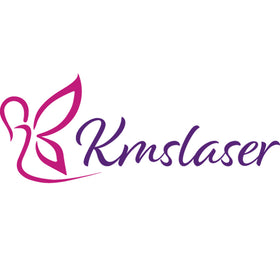Using Shockwave Therapy for Shoulder Tendonitis
What Is Shoulder Tendonitis and Why It's Difficult to Treat
Shoulder tendonitis—also called rotator cuff tendinopathy—is a painful condition caused by overuse, injury, or age-related degeneration of the tendons around the shoulder joint. Symptoms include pain when lifting the arm, stiffness, and reduced range of motion. Because of the shoulder's complexity and constant use, recovery is often slow and relapses are common. Shockwave therapy offers a non-invasive alternative that accelerates healing by delivering acoustic pulses to the affected area. These energy waves stimulate tissue regeneration, reduce inflammation, and break down scar tissue—helping patients regain mobility without injections or surgery.
| Type of Tendonitis | Cause | Typical Symptom |
|---|---|---|
| Supraspinatus tendonitis | Repetitive overhead movement | Pain when raising arm |
| Calcific tendonitis | Calcium deposit in tendon | Sudden sharp pain |
| Rotator cuff tendinosis | Age-related degeneration | Deep aching at rest or movement |
How Shockwave Therapy Accelerates Shoulder Recovery
Shockwave therapy works by creating microtrauma in the affected tendon and surrounding soft tissue. This triggers a biological healing response, including neovascularization (new blood vessel growth), collagen remodeling, and inflammation regulation. In the shoulder, where tendons often suffer poor blood supply, this is especially valuable. Radial shockwaves disperse energy over a wide area, making them ideal for broad shoulder coverage. Our system also includes EMS and 448kHz TECAR radiofrequency, offering a multimodal approach for faster muscle and tendon repair.
| Shockwave Action | Tissue Response | Functional Outcome |
|---|---|---|
| Acoustic microtrauma | Triggers natural repair | Reduced inflammation and pain |
| Increased blood flow | More oxygen and nutrients | Faster tendon healing |
| Fibroblast stimulation | Collagen production enhanced | Stronger, more elastic tissue |
Recommended Treatment Protocols and Who It Helps Most
For shoulder tendonitis, most clients begin with 1–2 shockwave sessions per week over 3–5 weeks. Results often appear within the first 2–3 sessions. Treatment intensity and applicator choice can be adjusted based on pain level, inflammation stage, and mobility restrictions. This therapy is well-suited for athletes, desk workers, manual laborers, and aging clients with shoulder mobility decline. Combining with EMS or TECAR heat therapy can further accelerate functional recovery and prevent relapse.
| Client Type | Shoulder Issue | Shockwave Protocol |
|---|---|---|
| Athletes (e.g., swimmers, tennis) | Overuse tendon inflammation | 3x/week radial + EMS 15 mins |
| Office workers | Postural strain, tension knots | 2x/week low-pressure wave |
| Seniors with calcific tendonitis | Calcium deposit and stiffness | 2x/week focused + TECAR therapy |
Frequently Asked Questions (FAQ)
Q: Is shockwave therapy painful for shoulder injuries?
A: Most clients describe it as a tapping or vibration. Intensity is adjustable for comfort.
Q: How many sessions are needed for tendonitis?
A: Typically 4–6 sessions over 3–5 weeks are recommended, depending on severity.
Q: Can it be used along with physiotherapy?
A: Yes—it's an excellent complement to stretching, strengthening, or massage therapy.
Q: Is there downtime after a session?
A: No. Clients can return to light activity immediately but should avoid heavy lifting for 24 hours.
Q: Where can I buy a system that supports tendon care?
A: Explore our radial + EMS + 448k TECAR combo here: shockwave therapy machine for orthopedic & aesthetic care.
Conclusion: Restore Shoulder Strength Without Surgery
Shoulder tendonitis is painful, frustrating, and often resistant to rest alone. With targeted shockwave therapy, you can accelerate healing, restore mobility, and help clients regain daily function—without needles, downtime, or surgical risk.
📞 Want to build a shoulder-focused recovery program?
Email us at sophia@kmslaser.com or contact via WhatsApp: +86 18676839070





